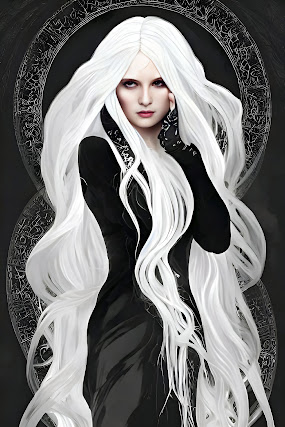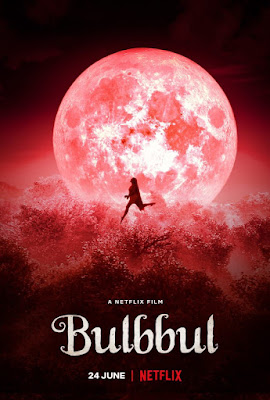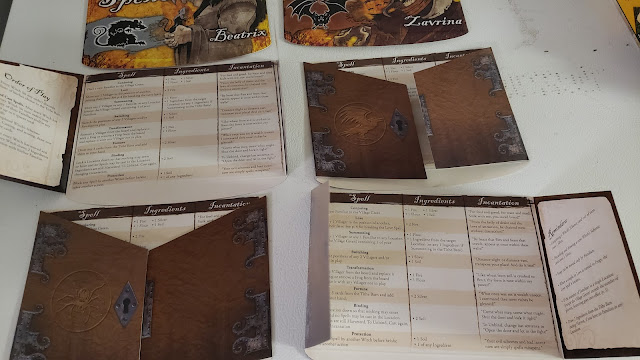
England is falling. She stuttered after the slaughter of the Great War and the ravages of the Spanish Flu. As the Bright Young Things flung themselves into the hedonism of the Jazz Age and the working classes fomented industrial action—if not outright revolution, the fall was accelerated after the Wall Street Crash spread the Great Depression around the world. Now as Fascism rises in nearby Europe and is admired and entertained by the Upper Classes, the country is losing its way, weak and unsure of what it once was, let alone what it is now. Yet there are those who recognise the malaise, and who not only know the solution, but have the means and the power to apply it and so restore the country. Since the strange occurrences in the South Pacific in 1925, there have been men and women who have come to see there are beings and powers beyond that can be used and bargained with to ensure that England can be at least itself once again, that it can inspire great men and simple men alike, be prepared to weather the coming storm, and perhaps aspire to be the Albion of William Blake’s verse. Their means is not politics or the modern arts of mass communication, but old arts and skills—magic! Or rather Alchemy, Spiritualism, and Witchcraft, as well as the Magick of the evillest man in England, Aleister Crowley. Armed with knowledge gained from their newfound skills and researches, they will delve into the myth and folklore of the country, allay the threats they sometimes are, have dealings with creatures and persons out of fable, and encounter those non-believers, rival magicians, and fascists who do not want a return to a green and pleasant land in a secret war which will play out over the course of the Desperate Decade.
This is the setting for
Fearful Symmetries, a campaign for
Trail of Cthulhu, published by Pelgrane Press. This explores the clash between rationalism and romance, science and magic, Lovecraft and Blake, the Mythos and the folklore in a framework inspired by Blake’s artwork and writings, that might not involve Lovecraftian investigative horror at all! For although the often non-Euclidean mathematics of the Mythos underly the workings of the mundane magics of Alchemy, Spiritualism, Magick, and Witchcraft, as well as the existence of the Mythos creatures and races that explain many of the creatures known in folklore, this does not mean that they will be recognised as being of the Mythos. Thus, the Investigators may encounter the Mythos but not necessarily recognise as such, likely losing Stability and Sanity nevertheless, just as they will for practising magic and encountering folkloric creature. Ultimately, magic, even as it empowers the Investigators to deal with the threats to Albion and ensure its restoration, is a double-edged sword, yet one more ‘fearful symmetry’ they will face in the course of a campaign.
Fearful Symmetries begins with an introduction to William Blake and both his works and mythology, contrasting them with those of Lovecraft. This section in particular is lavishly illustrated with Blake’s paintings, but they are used throughout the book and so give it a very individual look. Here the groundwork is laid for a campaign, including whether it should be played open or closed in terms of Investigator knowledge, the style of magic the Investigators should employ—Magick is the default, the conventions of magic, what type of characters to play, and advice for the player. The counterpart to this—or symmetry—is the advice and tools for the Keeper. The Folklore Engine and the History Machine are the primary sets of tools, more a series of prompt than necessarily tools, but they enable the Keeper to build mysteries and episodes around folklore and the real world. They have their own counterpart for the players in the form of
The Book of the New Jerusalem, an in-game prompt that they can draw from to direct their Investigators’ enquiries. Other tools include geographical and relationship maps, timelines, and more, the latter running all the way up to safety tools necessary for a good game. There is decent advice on setting up and running a campaign, the primary advice being that the Keeper improvise in response to her players’ and their Investigators’ actions and decisions, many of which are intended to be drawn from
The Book of the New Jerusalem.
One major difference between
Trail of Cthulhu and
Fearful Symmetries is the power level of the Investigators. In
Trail of Cthulhu—even in Pulp mode, the power level of the Investigators is low. At best, an Investigator might know a spell or two in
Trail of Cthulhu, whereas in
Fearful Symmetries they are magical adepts, capable of casting a variety of spells, empowering rituals, creating magical items, entreating with magical beings, and incarnating Blakean spirits.
Fearful Symmetries gives ways of making the casting of Incantations—immediate spells, and the performing of rituals—longer, more involved castings, both interesting and mechanically beneficial. Magic here has to be worked, especially the rituals, which the Investigators will be regularly performing, whether this is initiation rituals to bring someone into a magical group or attunement rituals to align the casters to a magical item or node. The attunement ritual will be important throughout a
Fearful Symmetries campaign as the Investigators will be working to restore and repair important locations upon England’s ley lines and this bring about a new Albion.
Although the default style of magic in
Fearful Symmetries is Aleister Crowley’s Magick, three others—Alchemy, Spiritualism, and Witchcraft—are also examined in detail. Others are mentioned as an aside, but the focus on the key four means that there is a lot here for the Keeper to grasp and understand, let alone her players. Having Magick as the default offsets that, although main reason is that having the Investigators share the same magical style means that they can easier work together. The wealth of information here means that the casting of magic should never get stale.
In terms of background,
Fearful Symmetries gives a good guide to life and cultures of mundane England of the thirties, details several of the occult groups operating in England in the period (these can be rivals, groups the Investigators can join, and so on), points to ordinary groups such as ramblers and potholers as useful contacts and NPCs, numerous creatures and beings from British folklore are described and given stats, as are various items and occult books. Occult England—or Albion—takes in not just the notable magical places across the country, thus tying in with
The Book of the New Jerusalem, but also extends beyond into other places. These include Fairyland, the astral plane, even Death, as well as John Dee’s Aethyrs, the planes surrounding the Earth. Combined with the ley maps in the appendices at the rear of the book and
The Book of the New Jerusalem and what
Fearful Symmetries provides an occult sandbox which the Keeper can develop a campaign from and the players and their Investigators can explore in pursuit of a restored Albion.
The default or sample campaign in
Fearful Symmetries comes oddly placed in the middle of the book. In ‘Fearful Symmetries’ the Investigators begin as newly initiated practitioners whose mentor is suddenly snatched away in front in of them by what is arguably Blake’s most well-known motif. Once the ritual is completed and now both initiated and incarnated as one of Blake’s Zoas, or primal spirits, they can begin following the clues in search of their mentor and discover who or what abducted her in front of their eyes. The plot thickens with a Lovecraftian antagonist, trips out into the English countryside and across seedy London (potential here for a crossover with
Bookhounds of London and
The Book of the Smoke, the London counterpart—or symmetry?—to
The Book of the New Jerusalem), and in the second part or series, confrontations with England’s growing obsession with fascism. Just fifteen pages long, this is an excellent outline, which together with the background, should develop into a good campaign.
Rounding out
Fearful Symmetries is a bibliography and a set of appendices that examine the ley lines network across London, worksheets, lists of alternate names for folkloric creatures, a glossary, a lengthy list of other occult books, and maps of the lay lines detailed earlier in the book. In particular, the examination of the ley lines network across London ties into the sample campaign and potentially turns
Fearful Symmetries into a sequel to the earlier
Bookhounds of London.
Physically,
Fearful Symmetries is cleanly and tidily presented, its tight blocks of text broken up by Blake’s artwork as well as the liberal inclusion of quotes from Blake himself, plus William Shakespeare, H.P. Lovecraft, Aleister Crowley, Arthur Machen, and many more. This makes the book a lot easier to read given the wealth of information it provides. If there is a downside to the book, it is the lack of index, inexcusable given just how much information there is in
Fearful Symmetries.
Fearful Symmetries is not a traditional campaign or setting book for Lovecraftian investigative roleplaying, let alone for
Trail of Cthulhu. Of course, Pelgrane Press has form here with
Dreamhounds of Paris, which combined Surrealism with the Dreamlands, but
Fearful Symmetries is not really about the Mythos, although it is present, hidden under layers of Blake’s mysticism and the occult traditions practiced in the thirties. So the Investigators may never even encounter it. Nor is it a case of encountering a great ‘evil’ and thwarting its plans necessarily, as is the usual in a campaign of Lovecraftian investigative roleplaying, but rather of restoring and rebuilding an ideal. This is Blake’s Albion, the old Albion, as opposed to the ‘new’ Albion that the English fascists might be dreaming of, again, one more of the symmetries to be found in the supplement. One way in which
Fearful Symmetries can be seen, especially in its emphasis upon Aleister Crowley’s Magick, is as a spiritual successor to Pagan Publishing’s
The Golden Dawn.
Fearful Symmetries takes
Trail of Cthulhu and the
GUMSHOE System into the realm of occult investigative roleplaying, and whilst it does not leave Lovecraftian investigative roleplaying behind, it does prove that it is as dangerous as the Mythos. There is a bucolic richness to this realm, both in the mundane and the magical, that begs to be explored and appreciated, but there is complexity too, more so than will be found in a typical
Trail of Cthulhu or Lovecraftian investigative roleplaying campaign. There is also, a sense of hope to
Fearful Symmetries, a yearning for England to be a better place, and as dangerous and as difficult as the attempt will be, that the Investigators are rebuilding and restoring the country, directing her down a different path, rather than saving the country against an unknowable and uncaring foe. In hindsight, this can also be seen as restoring England as she once was spiritually and thus preparing her in time for the calamities that will come in the face of war.
As English as it can be,
Fearful Symmetries is a superb set of tools for a very different type of campaign. Rife with fascinating parallels and contrasts,
Fearful Symmetries presents a setting and campaign of occult investigative roleplaying that will be demanding of Keeper and player alike, but enable them to explore a rich world of the occult and the folkloric, becoming the country’s secret saviours as they master dangerous Magicks, face fascist bullyboys, and bring about a better future.
 A surprise one tonight while browsing Hulu. A neat werewolf movie.
A surprise one tonight while browsing Hulu. A neat werewolf movie.







.jpg)
.jpg)












.jpg)









